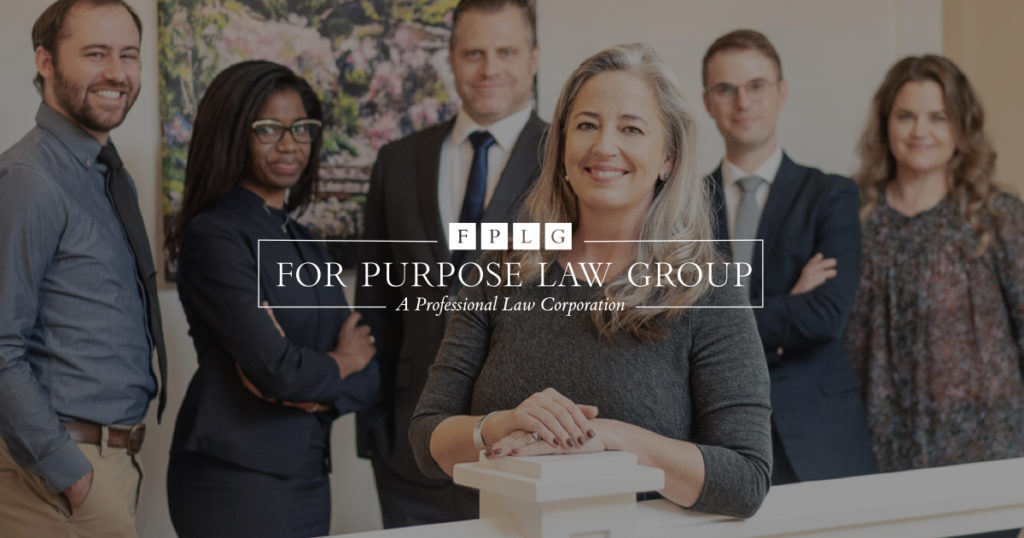
Are Nonprofit Private Schools Still Safe from Title IX Lawsuits?
04.18.2024 | Linda J. Rosenthal, JD

Social media has been described as a “Wild West” that nonprofits must “tame.” That should be your first clue. The rules and regulations governing nonprofits were complicated enough before the era of online networking. If an organization isn’t allowed to do something in the real world, it certainly can’t do it in the virtual world. There are just so many more ways on the digital superhighway to take a catastrophic wrong turn! There are lots of questions and few definitive answers. The internet is new, and social media is newer still. Technology is advancing at breathtaking speed but — unfortunately — some of the key policy- and decision-makers are way out of their depth on these technical matters.
So How Should you Begin?
In an earlier post, we suggested that a good starting point is reviewing some of the social media manuals and guidelines of other nonprofits. Many are available online. There’s also a useful workbook that can help you evaluate and identify which issues a policy should cover. Of course, your document should be custom-drafted and specific to your particular circumstances and needs. From time to time, we’ll discuss certain topics that you may want to include in your social media policy manual, along with some drafting suggestions.
A Few More Thoughts about our First Two Hypotheticals
At first blush, the two earlier examples may seem unrelated. They’re not. Both were case studies of how people other than the duly authorized representatives of a nonprofit can create unwelcome online headaches — or even catastrophes.
The Presumptuous Photo-Poster
In the first example, an eager volunteer on a fundraiser steering committee decided it would be a great idea to snap photos of happy guests at the Saturday evening gala and post them and some comments on the organization’s Facebook page. It wasn’t a good idea. It was a very bad idea — violating all sorts of rules and laws about privacy and confidentiality — and displaying a stunning lack of common sense. This nonprofit was a healthcare provider. Some of the photographed partygoers were now generous donors but earlier had been drug-addicted participants in the organization’s rehab program. The volunteer apparently didn’t think they would mind being identified in both capacities. But at least one of them objected very strongly, according to his lawyer’s angry phone call to the executive director first thing Monday morning. So, can the nonprofit just say “sorry,” and that’s the end of it? After all, this was just a volunteer with a cell-phone camera, who wasn’t the official event photographer, and who had no authority or control over the Facebook page. In the real world as well as the virtual world, organizations can sometimes be held responsible for, and bound by, the acts of volunteers. A well-drafted social media policy should anticipate, and spell out, exactly what volunteers can and cannot do. And the volunteers must be educated about these rules. Of course, this would have been a mistake even if it had been done by the executive director himself. That’s why the board of directors developing a social media policy should do some careful thinking about what’s ok to be posted and what should never be posted. The bottom line, though — and the best safeguard in a case like this — is to carefully control access to the social media accounts. If someone other than the person directly authorized to manage the Facebook page can post comments and photos, then the account manager must diligently monitor and remove problem items. After all, the organization is ultimately responsible for what is posted — and what is allowed to remain — on its social media accounts. And perhaps a complete ban on third-party postings should be considered; the risks may outweigh the benefits.
The Board Blabbermouth
The second example presents a much more common corporate problem: the overlap of the organization’s official online presence and the private, personal accounts of its most important people: directors, officers, and key employees. In this hypothetical, a board member — (who is not the president or the paid chief executive as well) — has written something on one of his personal social media accounts that could jeopardize the tax-exempt status of the organization. Organizations that hold section 501(c)(3) tax exemptions are strictly prohibited from engaging in any political activity. This man identifies himself on his private social media channels as a director of the nonprofit — and his affiliation with the group is well-known in the community. He wrote a scathing post about a particular legislator who does not share or support his (and the organization’s) enthusiasm for environmental regulation. He ended that entry with an endorsement of the official’s opponent in the coming election. And this was not a one-time occurrence. This director often voices his political opinions online. Now, if that type of post had been made by the nonprofit’s CEO, during working hours, on the organization’s official sites, it would be a clear-cut violation. But the ban on political activity may extend beyond the 501(c)(3)’s official actions by personnel officially authorized to act and speak for it. It can apply also to unofficial actions, “such as an employee using her organizational computer and email account during her lunch hour to send messages to friends encouraging them to support or oppose a candidate.” This prominent director is, of course, much more deeply and officially connected to the organization than the office receptionist, but his rants were on his own time, equipment, and personal blog. So, is his posting grounds for revocation of the nonprofit’s tax exemption or not? What if the director had merely posted a link on his blog to a third party’s online article endorsing the legislator’s opponent? What if the CEO had simply retweeted — on the organization’s official Twitter account — a post critical of the lawmaker and calling for his electoral defeat? Are there clear-cut answers to each of these situations? Maybe. Maybe not — or maybe not yet. There are so many questions and issues; lawmakers, government officials, and the courts are overwhelmed. But that gets us back to the social media policy manual: A comprehensive document, carefully considered and debated by the board of directors, can nip some of these problems in the bud. There should be clear guidelines — and prohibitions, when necessary — to protect the organization from risks like these.
Conclusion
There’s a lot to consider — not only for nonprofits are starting from scratch with a brand-new social media policy, but also for those groups who already have guidelines in place. Because of the complexity of the issues, and the rapid developments in the law, it’s a good idea for all groups to regularly revisit and update their social media rules.
